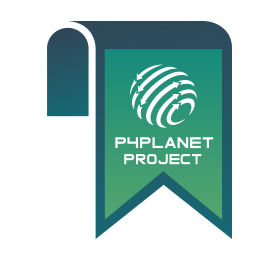We spoke with Christophe Pinck, one of the founding members of the H4C Community of Practice.
Can you describe your role at EYDE-Cluster?
The EYDE-Cluster is the Norwegian Centre of Expertise (NCE) for Sustainable Process Industry, working for the transition towards a sustainable future. Our members – mainly based in the South of Norway – range from multinational companies delivering high quality materials to a global marked, to regional suppliers, research organizations and education institutes. We currently have approximately 80 members.
I work as International Affairs and EU- Advisor on behalf of the members of the EYDE-Cluster, dealing with topics such as European issues, policies, strategic and innovation projects. My background is in sustainability. I support the process industries in Norway and Europe by setting up meaningful innovation activities with the right partners to develop business models in line with planetary boundaries. Together with regional, national, and international partners we collaborate on impact-driven and often circular production systems to increase resource efficiency, new business models, entrepreneurial support services, transparent value chains, carbon capture and much more. Since many of our members produce non-ferrous metals, the Circular Economy topic as a resource management strategy is very important in our cluster. In 2016, we started building up the symbiosis program and building I(U)S and CE partnerships.
Further to my work at EYDE-Cluster, I also chair a permanent working group on Hubs4Circularity at ASPIRE to develop a foresighted innovation agenda for the next generation of Industrial/ Industrial- Urban Symbioses through the Process4Planet partnership, where we have working groups on topics such as CCU (carbon capture and utilization).
Who are the actors in your region involved in I(U)S/ CE exchanges? What are their main challenges?
In our region we don’t have industry parks – but geographically scattered companies, with unused resources offering potential for I(U)S / CE collaborations. Our aim is to attract companies to build smaller parks around them.
The partners in our region collaborate closely on setting up I(U)S/ CE exchanges. For example, we had around two TW hours of waste heat being generated. To find a solution, we engaged with our county administration because we did not have the mandate to resolve the issue ourselves. Now, the use of waste heat is nicely anchored in our regional business strategy.
We work as part of a local network called Agder Symbiosis, where we have regional authorities, the two biggest municipalities and the county administration present, and development agencies (but no research organizations). The focus is on the very practical implementation of I(U)S/ CE collaborations – we need to know how to do it – that’s the big hurdle!
In the network, we try to identify demands for unused resources (such as post-industrial waste, by-products). This is one of the main tasks we work on. What is challenging about it is that people want quick results – but it takes time to establish new (I(U)S and CE) collaborations. We started our activities in 2016. However, getting the right partners and getting the partners come to the right level of knowledge takes time. We map the resources which the members have available and analyse them (e.g. in terms of composition, variability in terms of the amounts generated). On the demand side, we analyse which resources are needed for which technology, so we can identify who would be a good fit for those sites. Overall, we are known for our commitment to build an overall system with a low footprint, and with 100% resource utilization. We want to attract new players with the same goal.
Is there something from Eyde Cluster you would like to share with the Hubs4Circularity Community of Practice?
Industry parks are more the exception than the norm. They are mostly common in Western Europe. We can bring in knowledge on how to plan, design and build industrial symbioses.
Furthermore, in Norway, we are looking into how food production using symbioses could help us become less import dependent. One “hot topic” is food production based on waste heat – something that could be replicated more widely. Another example is the implementation of aquaponic systems, i.e. cultivating plants and fish together in a constructed ecosystem where the residues from fish farming can be used as fertilizer for agriculture.
What would you like to discuss with the Community?
One question we try and find solutions for is how to make the companies more resilient. In some cases, we have so-called anchor tenants, i.e. companies that others depend on in an industrial (urban) symbiosis. For example, one company’s by-products/side-streams may serve as raw material input for 20 other companies that depend on the input. Those companies need some kind of reassurance about the continuous availability of the by-product to be able to make (infrastructure) investments. Finding solutions for these kinds of inter-dependencies is a topic we would be interested in discussing with others.
Picture Source: Christophe Pinck, Eyde Cluster


